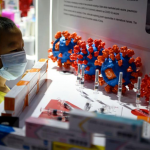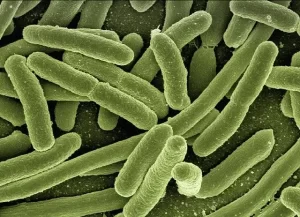China COVID-19 vaccines will fill the global the supply shortage
China COVID-19 vaccines will fill the global the supply shortage
China COVID-19 vaccines will fill the global the supply shortage. “Fortune” magazine published an article on December 5 that experts expressed concern about the expensive cold chain required to transport Pfizer and Moderna vaccines and the data provided by AstraZeneca. At the same time, the upcoming COVID-19 vaccine by Chinese drugmakers may fill the gap in global vaccine supply.

△ “Fortune” magazine report: How China’s COVID-19 vaccine fills the vacancies of Pfizer, Moderna and AstraZeneca △ “Fortune” magazine report: How China’s COVID-19 vaccine fills the vacancies of Pfizer, Moderna and AstraZeneca

Pfizer and Moderna vaccine cold chain transportation is expensive and difficult to obtain in low- and middle-income countries
According to the article, the temperature of Pfizer and Moderna vaccine candidates needs to be kept below zero during transportation. This temperature restriction will make it difficult for low- and middle-income countries to obtain vaccines. Pfizer’s vaccine must be transported at minus 70 degrees Celsius (minus 94 degrees Fahrenheit), which is lower than the average winter temperature in Antarctica. The vaccine in Moderna needs to be kept at minus 20 degrees Celsius (minus 4 degrees Fahrenheit), roughly equivalent to the temperature of a home freezer.
△November 20, 2020 An employee made dry ice pellets in a dry ice factory△November 20, 2020 An employee made dry ice pellets in a dry ice factory
Indonesia’s state-owned biotechnology company Bio Farma said that in view of the high logistics requirements for the storage and distribution of vaccines, Indonesia is actually unable to purchase Pfizer vaccines.
The effectiveness of AstraZeneca vaccine is questioned
On November 23, AstraZeneca announced the results of a COVID-19 vaccine trial developed in cooperation with the University of Oxford. The average effectiveness is 70%, and the effectiveness of one and half doses can reach 90%. According to AstraZeneca’s data, a total of 2741 people received the one-and-a-half dose regimen, with an effective rate of 90%; while 8895 volunteers received the two-dose regimen, with an effective rate of only 62%. The average effectiveness of 70% is obtained by combining these two sets of data.
But AstraZeneca revealed the next day that the one-and-a-half dose plan was purely a mistake. The researchers mistakenly injected the first group of volunteers with half the vaccine.
After the mistakes in the AstraZeneca vaccine trial were disclosed, the scientific community raised widespread doubts about AstraZeneca’s research results. Some experts believe that the trial data lacks transparency in some key aspects. The sample size of the one-and-a-half-dose regimen group is relatively small. It is difficult to explain whether the 90% effectiveness is a real result or an accidental deviation result. They doubt There may be “major loopholes” in the data.
△Bloomberg report: AstraZeneca will conduct an additional round of vaccine trials due to piles of problems △Bloomberg report: AstraZeneca will conduct an additional round of vaccine tests under piles of problems
AstraZeneca and the University of Oxford have finally announced that they will conduct an additional round of research trials on the vaccine to verify the effectiveness of the half-dose regimen.
China’s vaccine may fill the global vaccine supply gap
Huang Yanzhong, senior researcher on global health issues of the US Council on Foreign Relations, said that AstraZeneca’s plight and restrictions on the transportation and distribution of Pfizer and Moderna vaccines will be a gap in global vaccine supply, and Chinese vaccines may fill this gap.
China’s two major vaccine manufacturers, Sinopharm Group and Kexing Biotechnology, are currently conducting phase III clinical trials on three candidate vaccines, which can be distributed without cold chain.
Huang Yanzhong said that China’s vaccine candidates will be very attractive to low- and middle-income countries, especially those countries that cannot afford or cannot maintain cold chain delivery of vaccines.
In addition, “Fortune” magazine reported that the US vaccine will mainly focus on domestic trials in the United States, but China is conducting clinical trials in many countries around the world. Brazil, Turkey, and Indonesia have reached an agreement with Kexing Biotechnology to purchase tens of millions of doses of vaccine if the phase III trial is successful.
Currently, two inactivated vaccines, Beijing Institute of Biological Products and Wuhan Institute of Biological Products, affiliated to Sinopharm Group, are conducting phase III clinical trials in ten countries including the UAE, Paris, Jordan, Peru, Argentina, and Egypt. 5 More than 10,000 people, the sample size of the vaccinated population covers 125 nationalities, and the progress in all aspects has been widely recognized internationally. Now dozens of countries have put forward COVID-19 vaccine requirements to Sinopharm Group Sino Biotech.
Nicholas Thomas, a vaccine research expert at the City University of Hong Kong, believes that Sinopharm has established a huge distribution system and that the system has undergone stress testing. This will also be a major advantage of Sinopharm’s future distribution.
(source:internet)
Disclaimer of medicaltrend.org



